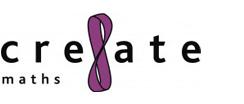Graphs of Quadratic Functions
Students are required to progress from linear functions by being able to recognise, sketch and produce graphs of quadratic functions of one variable with appropriate scaling, using equations in x and y and the Cartesian plane. This resource package contains a variety of activities designed to provide students with the opportunity to develop the skills necessary to deal confidently with mathematical situations involving the graphical representation of a quadratic function.
Visit the secondary mathematics webpage to access all lists.
- ALL
- Textbook
- Presentation
- Group work
- Activity sheet
Textbook
Intermediate 1
This resource consists of a textbook. Chapter 11, Graphs, is appropriate to this topic. The chapter begins with explanations, examples and exercises covering the graphs of linear functions. Page 214 of the pdf moves on to explain how to plot non-linear graph, beginning with how to plot the graph of y=x^2 by constructing a table of coordinates generated by substitution into the equation.
The discussion point on page 215 of the pdf challenges students to investigate the graphs of different functions and to describe similarities and differences in families of graphs.
The exercises provide a variety of question types - plotting graphs, matching graphs to equations, finding points where the graphs cross axes.
Graphs, Equations and Inequalities
The text begins with a section explaining linear inequalities. The second section is appropriate to this topic. The section begins with a recap of how to plot the graph of a straight line by plotting three coordinates which satisfy the equation of the straight line. The examples then move on to explain how the graph of y=x^2 can be plotted by constructing a table of values for x and y which satisfy the equation. Further examples and exercises follow. The third section progresses to explore graphs of cubic and reciprocal functions.
The activity sheet contains three activities which use graphs of functions in context. The first activity, Maximum volume of cuboid, is appropriate to this topic and requires students to plot the graph showing the surface area of a cuboid which is then used to find the minimum surface area as the dimensions of the cuboid changes. Students then have to interpret the result in terms of the context of the problem.
Presentation
Quadratic Equations
This interactive powerpoint presentation explains what a quadratic graph is and what it looks like. The general equation f(x) =a(x+b)²+c is used. Students are asked to explore what happens to the graph as the values of a, b and c are altered. This activity is good for requiring students to develop methods of working systematically, making observations, drawing conclusions, generalising and predicting. This is a good opportunity for more able students to meet function notation. Later parts of the presentation explore transformations of quadratic functions.
Group work
Keeping Baby Warm
This activity requires students to explore connections between volume and surface area. Students make models of babies and adults using mathematical shapes, cuboids, prisms, cylinders, spheres, and so on. Students are expected to draw graphs to show the results of their findings which can lead to the use and exploration of a variety of graphs including graphs of quadratic functions.
Activity sheet
Graphs
SMILE pack two contains a number of activities encouraging students to explore the graphs of quadratic functions. Some activities suggest the use of a MicroSMILE program QUAD, but any graphing package or a graphical calculator would be appropriate. These activities can be used to encourage students to explore the nature of quadratic graphs before formal plotting is tackled.
A Sketch activity asks students to explore graphs of y=ax², y=(x+b)² and y=x² +c for varying values of a, b and c. Quadratic solutions uses graphs of quadratic functions to solve quadratic equations and could be used as an activity to show why it is useful to be able to draw graphs of quadratic functions. Matching graphs requires students to match equations of cubic graphs, quadratic graphs and linear graphs to their equations






